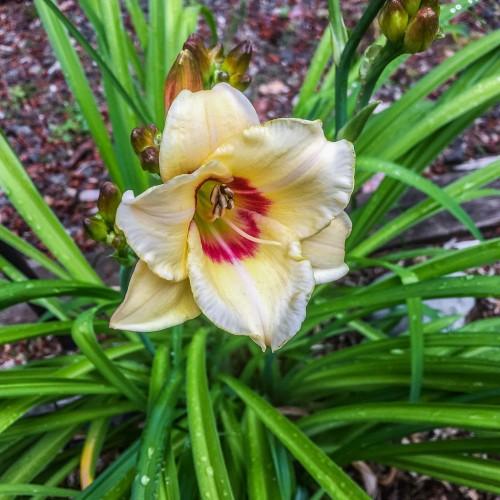
daylily
Hemerocallis 'Sir Francis Drake'
Cycle:
Herbaceous Perennial
Watering:
Average
Hardiness Zone:
3 - 9
Flowers:
Flowers
Sun:
Full sun,part shade
Leaf:
Yes
Growth Rate:
High
Maintenance:
Low
Drought Tolerant:
Yes
Salt Tolerant:
Yes
Care Level:
Medium
watering
Daylily (Hemerocallis 'Sir Francis Drake') should be watered regularly-about once a week-to keep the soil moist but not soggy. During the spring and summer months, increase the frequency of watering slightly. You should water your daylilies when the soil begins to feel dry to the touch. If you are unsure, check about an inch beneath the surface. A deep, thorough watering session every couple of weeks is generally sufficient for this species. During the hot summer months, you may need to water your daylily every few days or even daily if the weather is particularly hot and dry.
sunlight
Daylily species (Hemerocallis 'Sir Francis Drake') prefer a full sun location with at least 6 hours of direct sunlight per day. It can also tolerate some partial shade during the heat of the day in locations that are particularly warm. It is important to ensure that the daylilies are not exposed to too much shade, as this may lead to stunted growth or poor flower production.
pruning
Pruning daylilies helps to promote healthier plants and blooms. Daylilies should be pruned in early spring, just before new shoots appear. Cut off all faded or damaged foliage, as well as any dead, thin or weak looking flowers stalks. Be careful not to disturb the buds at the crown of the plant. When pruning daylilies, never remove more than 1-third of the foliage. Remove the foliage near the base of the clump by gently pulling it away from the crown to avoid harming new shoots. Avoid cutting the foliage too close to the crown as this can damage the new shoots. Fade blooms should also be removed regularly throughout the growing season. Prune away the petals after the flowers are dead, but leave the stem intact until the seeds have fallen off. This allows the plant to complete its life cycle and provides nutrition to the plant in the process. After the blooms are spent, the foliage should be cut back to the base of the plant to encourage growth and new blooms.
